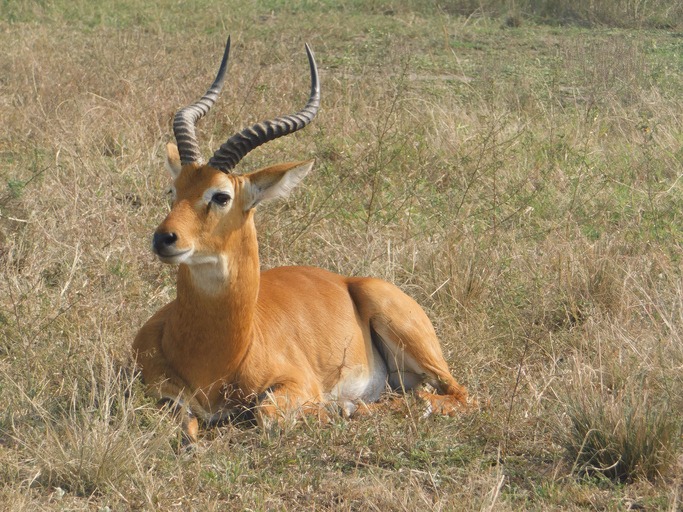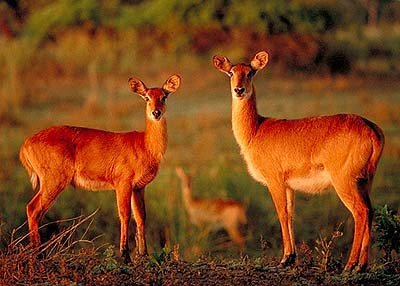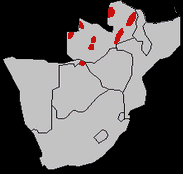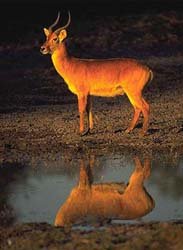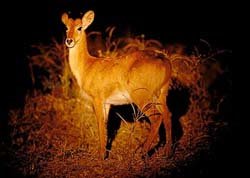A native to the Kilombero Valley of Tanzania, Pukus are widely distributed among the southern-central part of the African continent. Sometimes, they are mistaken as Lechwes, Impala, or Southern Reedbuck due to its golden-brown color. However, Pukus have several characteristics that make them stand out among its look-alikes.
Read further to know more about Pukus.
What is a Puku?
The Puku is primarily found in the wetlands, savanna, and grasslands of Namibia, Zambia, Tanzania, Malawi, Botswana, Angola, and in the south region of the Democratic Republic of Congo. With Kobus vardonii as its binomial name, Pukus are medium-sized antelopes that are sensitive to disturbances.
Its estimated total population is 130,000 individuals who are scattered in various isolated areas. One-third of their population can be found in protected areas, national parks, and zoos, but most of its numbers were sighted in The Kilombero Valley in the country of Tanzania. However, the population of Pukus has been continuously declining; that is why the International Union of Conservation of Nature (IUCN) classified this species as "Near Threatened." This assessment was last recorded in June 2016.
Pukus are currently facing the threat of losing their habitats because of the competition with livestock, as well as the conversion of their shrubland habitats to farmlands.
Its seven levels of classification are as follows:
Kingdom: Animalia
Phylum: Chordata
Class: Mammalia
Order: Artiodactyla
Family: Bovidae
Genus: Kobus
Species: Kobus vardonii
Physical Attributes of a Puku
A Puku stands at the height of 80 cm (or 31 in) at the shoulder and weighs 60-90 kg. Its head and body length range from 126-160 cm, while its tail length grows up to 30 cm. Male Pukus are relatively bigger than female Pukus—they have thicker and muscular necks than the female Pukus. Also, male Pukus are the only ones who grow horns that are scooped upwardly from their skulls, forming a lyre shape. Their horns grow from an average of 40-50 cm.
A Puku's fur has varying colors but is dominantly golden yellow in color. Its forehead is browner than the other colors, and white fur can be spotted near its eyes, underbelly, neck, and upper lip. A Puku's coat is rougher than the Southern Reedbuck and Lechwe, and its tail lack bushiness, but have long hairs that extend from the tail tip.
Habitat and Distribution of Pukus
Pukus are mainly found in grasslands, floodplains, and savannas in south-central Africa. However, seasonal transitions urge species to move from one habitat to another. For example, Pukus who live in wetlands move to higher elevations to secure their safety and to avoid being affected by the flood. During dry seasons, they migrate to areas that have a nearby water source.
Fascinating Facts You Should Know About Pukus
Pukus are grazers, meaning the grass is their primary source of food. They like plants that contain high crude protein content such as the Eragrostis Rigidior. But when the grass has matured, they eat other plants that contain protein. During March, it was recorded that approximately 92% of their diet comes from Brachiaria Latifolia, which has 5% crude protein content.
The members of this species communicate through whistling. This sound is used to alarm other Pukus of an impending threat. Meanwhile, a young Puku whistles to get the attention of its mother.
Territorial male Pukus tend to brush their horns on the grass to mark their territory and to saturate it with their neck secretions. These secretions serve as a warning to other male Pukus that may step into their territory. If a bachelor male Puku tries to enter the domain, it will be forced to go away. However, when another territorial male Puku tries to step into another territorial Puku's marked area, the owner will wag its tail to scare the trespassing make Puku. When it does not budge to leave the site, the two territorial male Pukus will engage in a fight. Usually, when male Pukus battle for territory, they clash their horns together.
The main predators of Pukus are lions and leopards, but unfortunately, some humans hunt them too. The constant hunting is one of the reasons why their population is on a continuous decline. After reading this, we hope people would realize to protect the Puku's population and save this species from further decline.
WILDLIFE PARKS AND RESERVES WHERE THIS SPECIES IS FOUND:
BOTSWANA
Chobe National Park
Linyanti Swamp
NAMIBIA
Caprivi Region
ZAMBIA
Kafue
Lechwe Plains
South Luangwa

